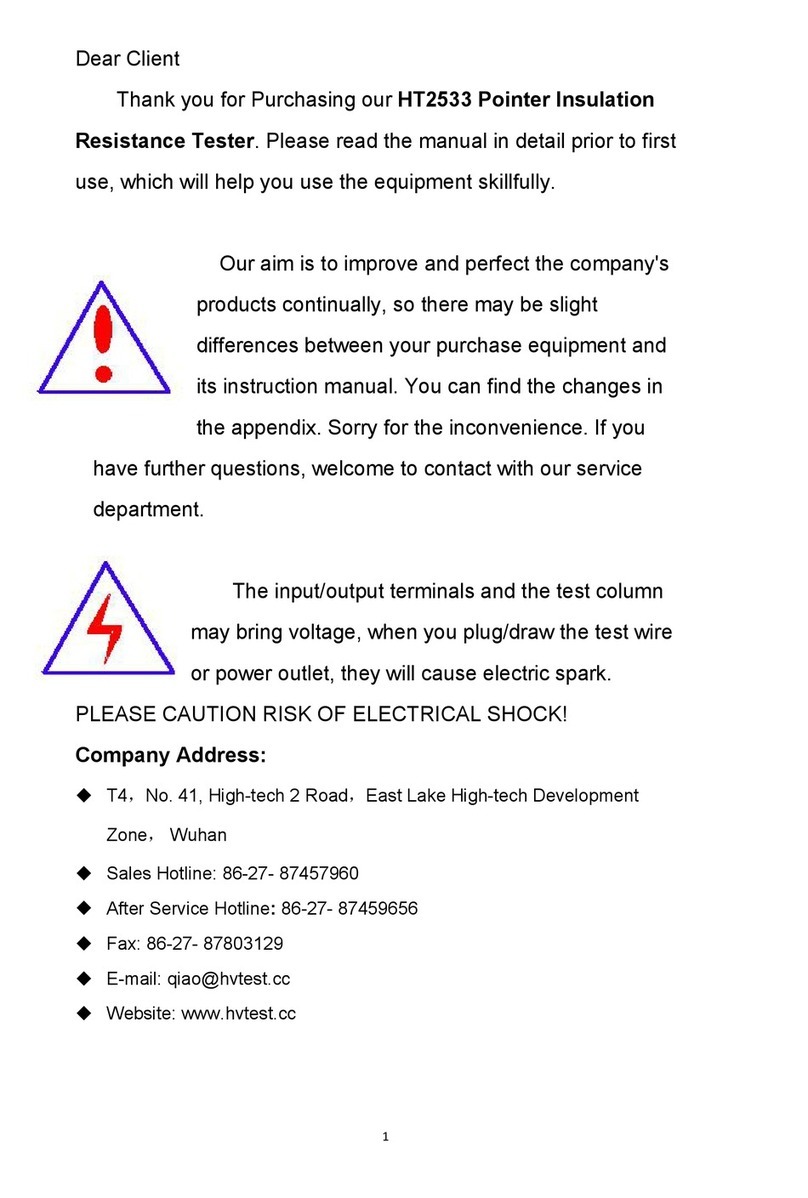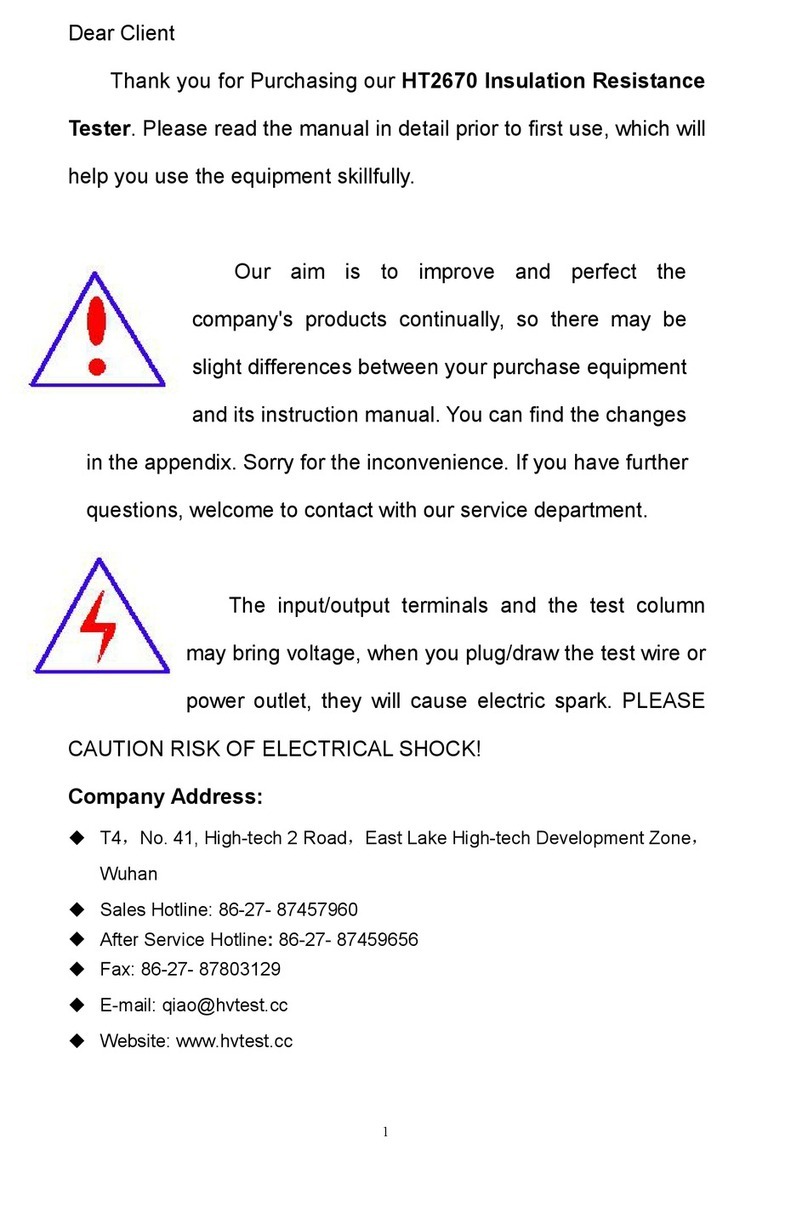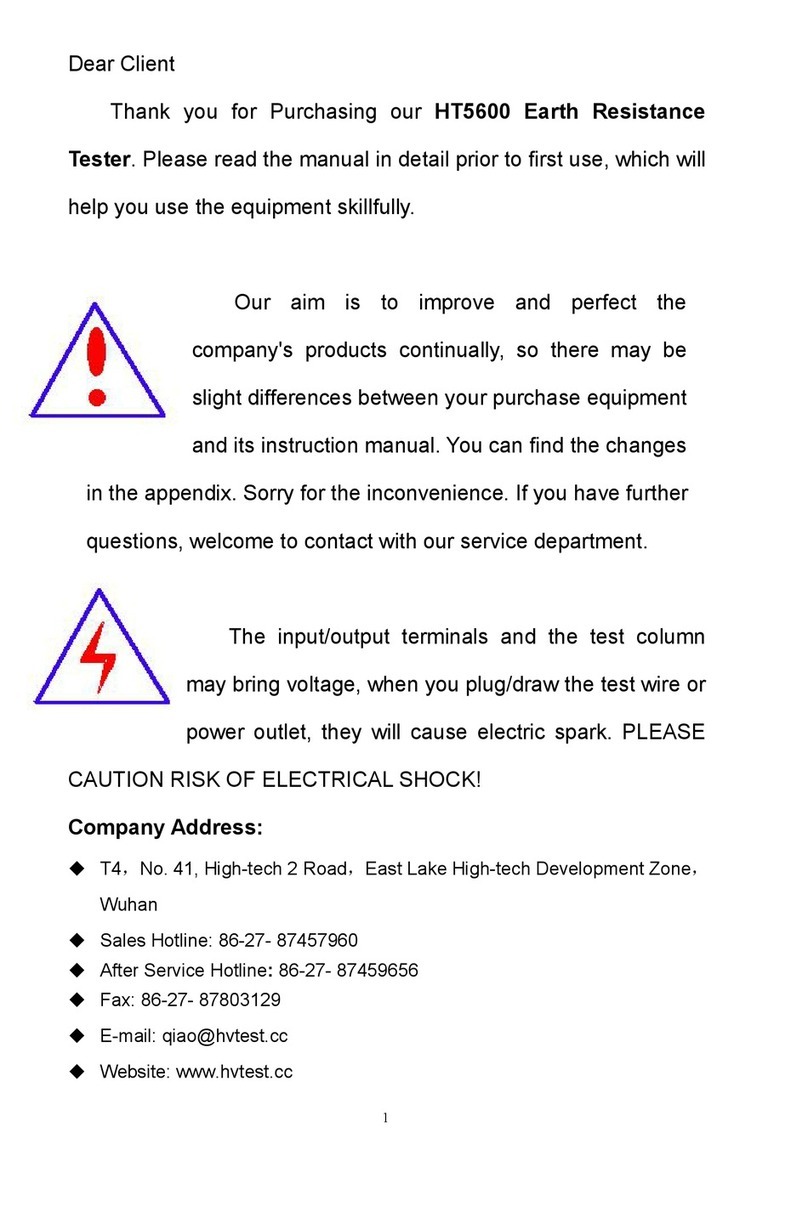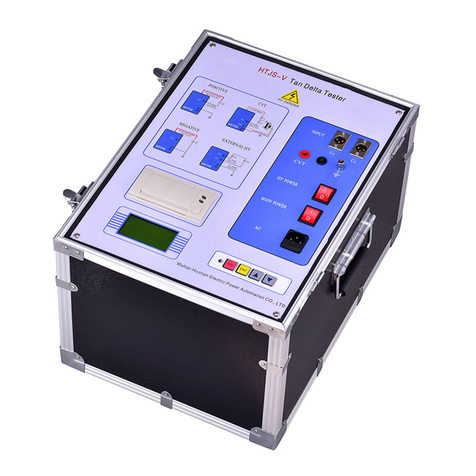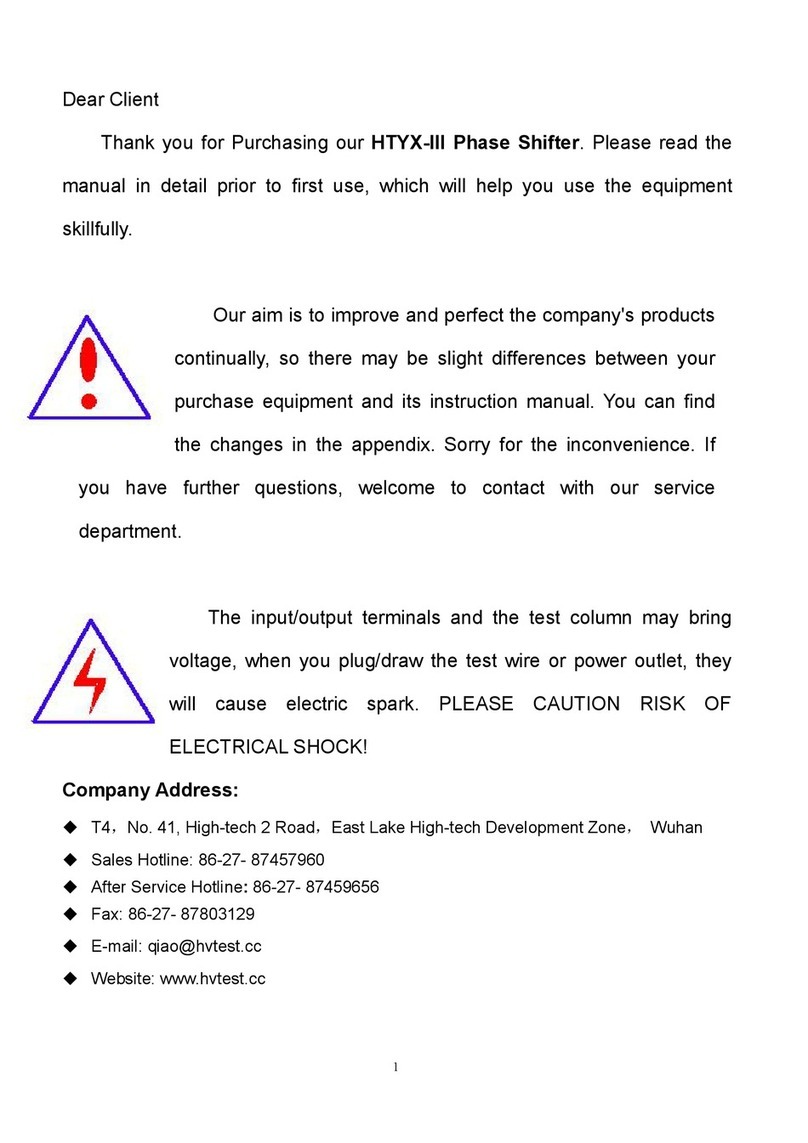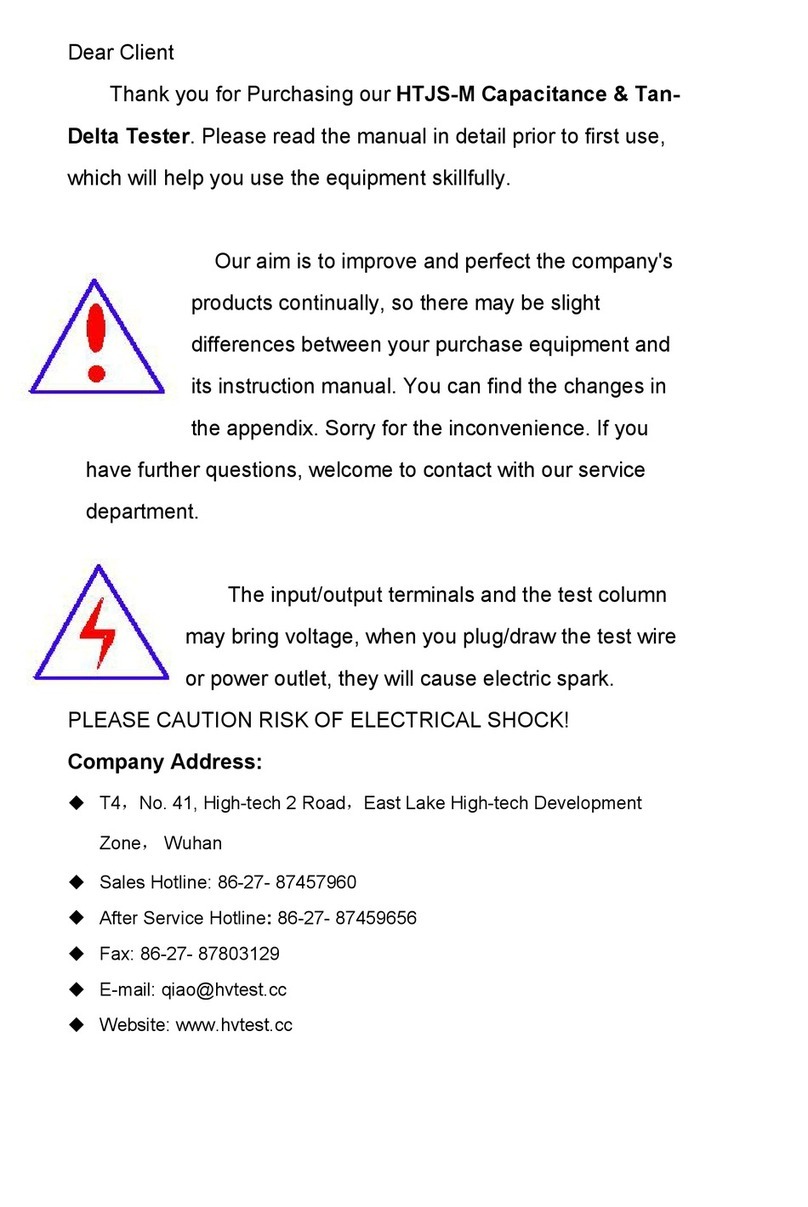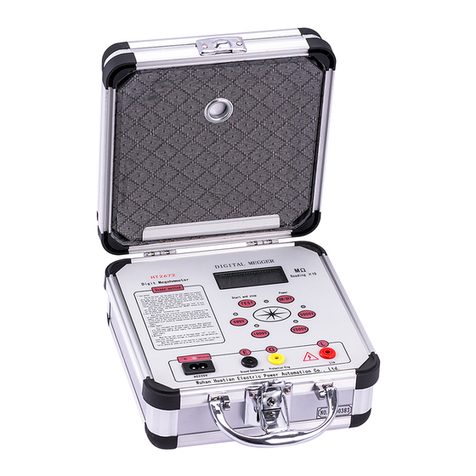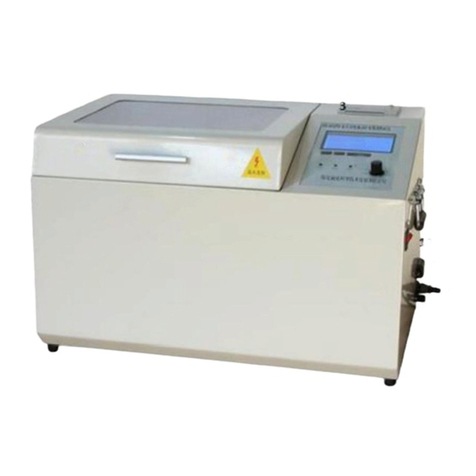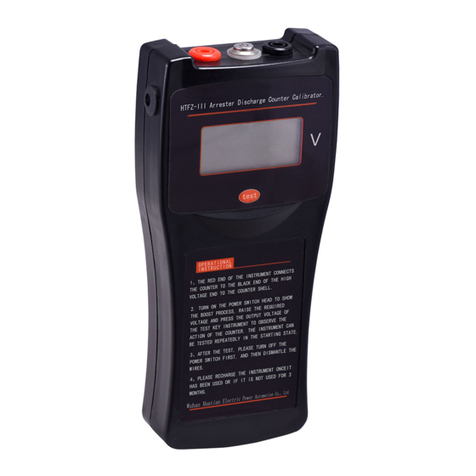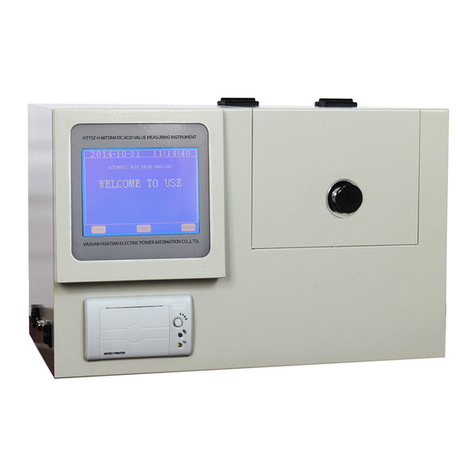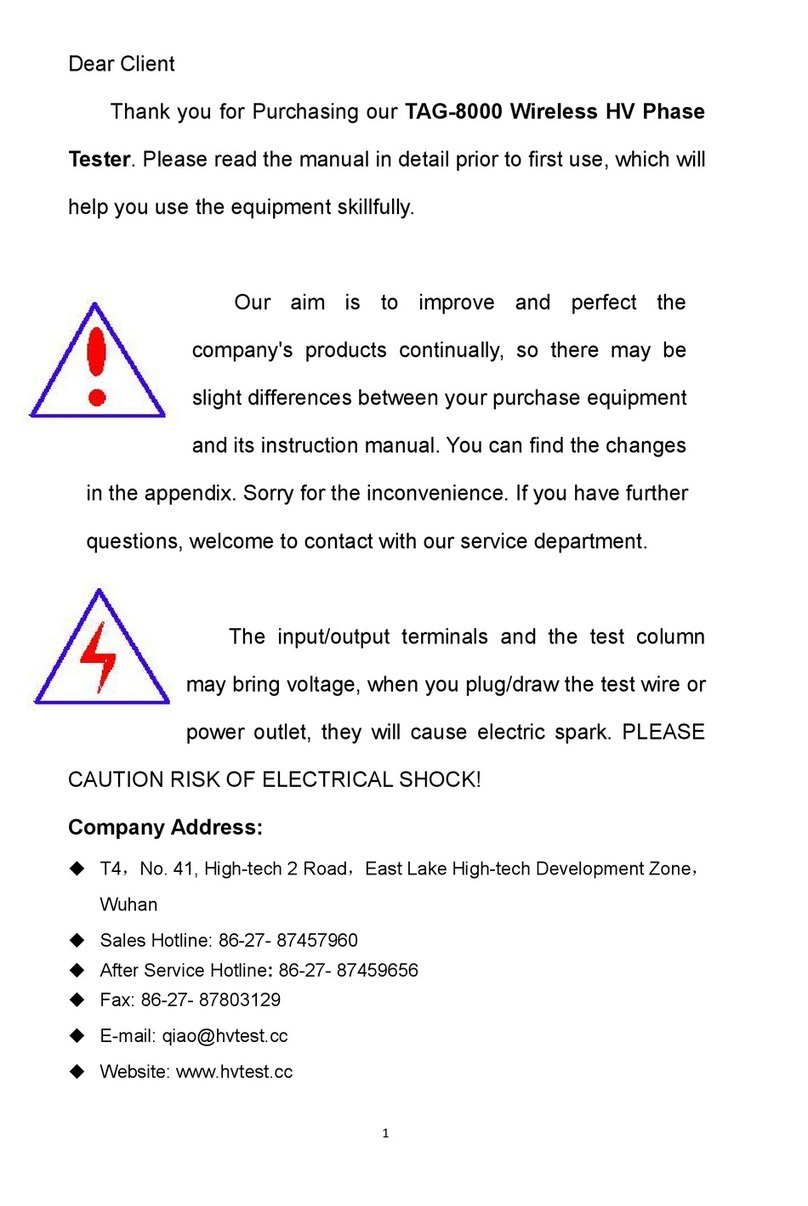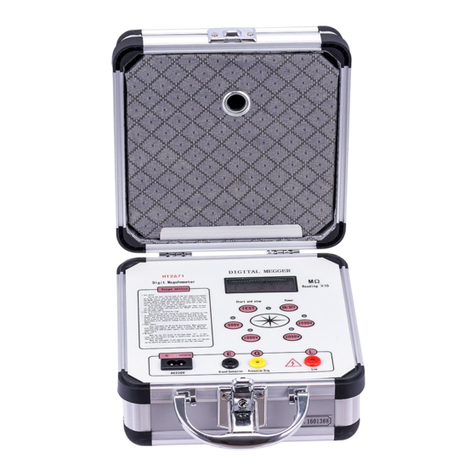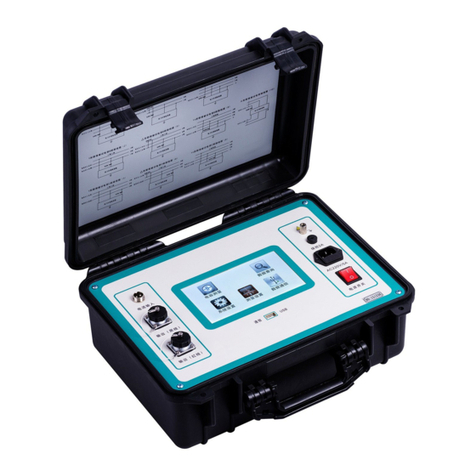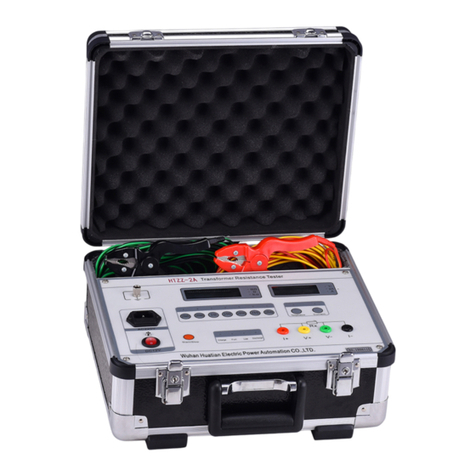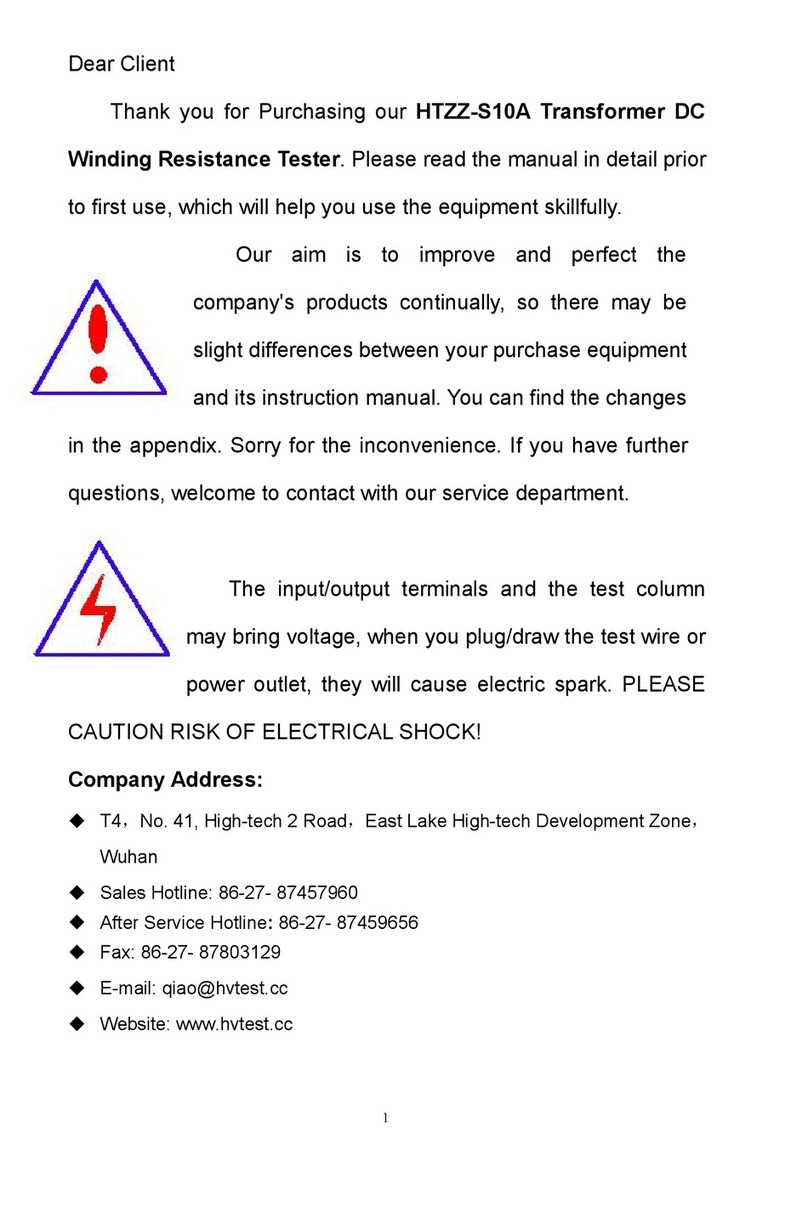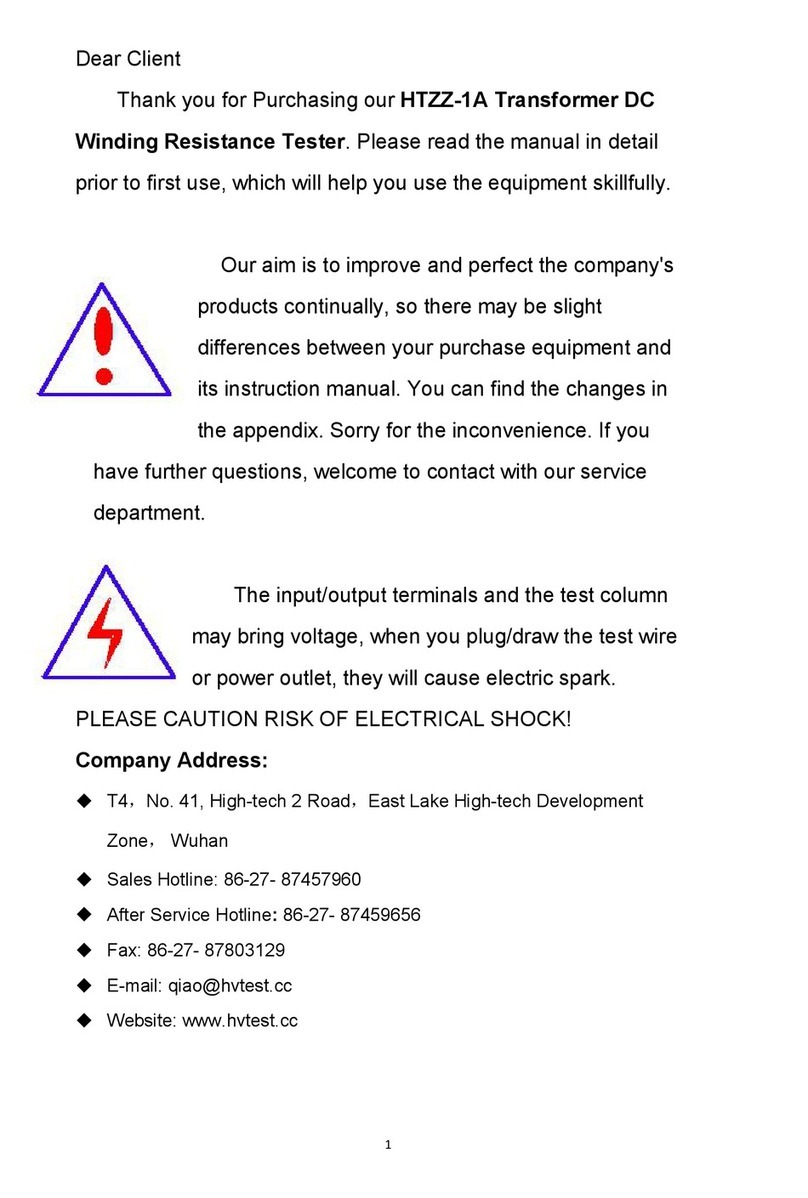
5
Contents
I. Attention................................................................................................ 6
II. Brief Introduction...............................................................................7
III. Specification.......................................................................................8
1. Model of Series............................................................................................................ 8
2. Ranges and Accuracy of Measurement................................................................... 9
3. Technical Specifications..............................................................................................9
IV. Structure of Meter...........................................................................10
V. Crystal Display..................................................................................11
1. LCD Screen.................................................................................................................11
2. Description of Special Symbols............................................................................... 12
3. Examples Illustrated.................................................................................................. 12
VI.Quick Find Table...........................................................................14
VII. Operating Method......................................................................... 14
1. Boot Up........................................................................................................................14
2. Shutdown.................................................................................................................... 16
3. Resistance Measurement.........................................................................................16
*4. Current Measurement..............................................................................................17
5. Data Lock/Release/Storage..................................................................................... 18
*6. Data Access.............................................................................................................. 19
*7. Setting of Alarm Critical Value................................................................................ 20
*8. Access to Alarm Critical Value................................................................................20
*9. Clear Data..................................................................................................................21
VIII. Measurement Principle.............................................................. 21
1. Principle of Resistance Measurement.................................................................... 21
2. Principle of Current Measurement.......................................................................... 22
IX. Measurement Method of Grounding Resistance.................. 22
1. Multi-Point Grounding System................................................................................. 22
2. Limited Point Grounding System.............................................................................24
3. Single-Point Grounding System.............................................................................. 25
